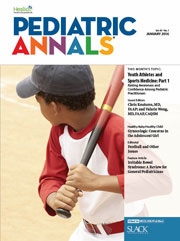Seven Tips to Protect the Arms, Knees and Careers of Young Catchers
There is a great demand for willing and talented catchers, and many great demands are placed especially on the shoulders, elbows, and knees of those who toil behind the plate.
From bullpen warm-ups to bunt defense to gunning out runners at second or third, catchers are a focal point of both practices and games.
All while doing the routine return throwing of the ball to the pitcher with most of this work done in the squat position with foul balls coming right at them.
In all, no player makes more total throws than a catcher.
Yes, the majority of those are fairly easy tosses back to the pitcher.
However, there are those harder pick-offs or throws to catch steals that only add to the cumulative stress.
And when pitchers get tired, they get replaced- unlike the catcher who tends to stay out there even for both ends of a doubleheader.
While there are pitch count limits and required rest days for pitchers, the only such formal guidelines placed on catchers are by Little League Baseball which mandates that any player who throws more than 41 pitches in a game cannot move to catcher in the same game.
So what other guidelines can help protect the overall health and longevity of catchers?
1. Have catchers alternate standing and being in the squat position with return tosses to the pitcher.
- Throwing from the squat is quicker and looks pretty cool, but the lack of lower body involvement in the throw places more stress on the shoulder. Coming out of the squat not only gets the legs involved in the throw but also reduces lower leg cramping.
2. Have catchers sit on a bucket for practice and bullpen sessions- allows them to give a consistent target while putting less deep squat-induced pressure on the lower legs. The "knee saver" products are designed in theory to similarly reduce deep knee bending in the squat position.
3. Try to limit unnecessary throwing during practices or bullpen sessions. Let catchers roll balls back or drop them in a bucket- less throwing means less overall stress and likely better throws when they matter.
4. Have a regular rotation of catchers. While inning counts or throw counts like for pitchers do not exist, monitor catchers for signs of fatigue such as slower to come out of squat, weaker throws back to pitchers or to bases, and giving a lower target due to shoulder fatigue. Better even to plan ahead with catcher substitutions rather than waiting for more obvious signs of overload.
5. Select sensible alternate positions- first base is attractive as there is a limited throw demand which then allows some arm rest, and also takes advantage of the fact that most catchers are taller and used to providing good targets for balls coming at them.
6. Caution with the pitcher-catcher combination that results in too many throws and increases the risk of injury.
7. Limit seasonal or annual arm overuse. Catchers playing for more than one team or not taking at least 2-3 months a year off from throwing are at higher risk of shoulder or elbow injuries.





